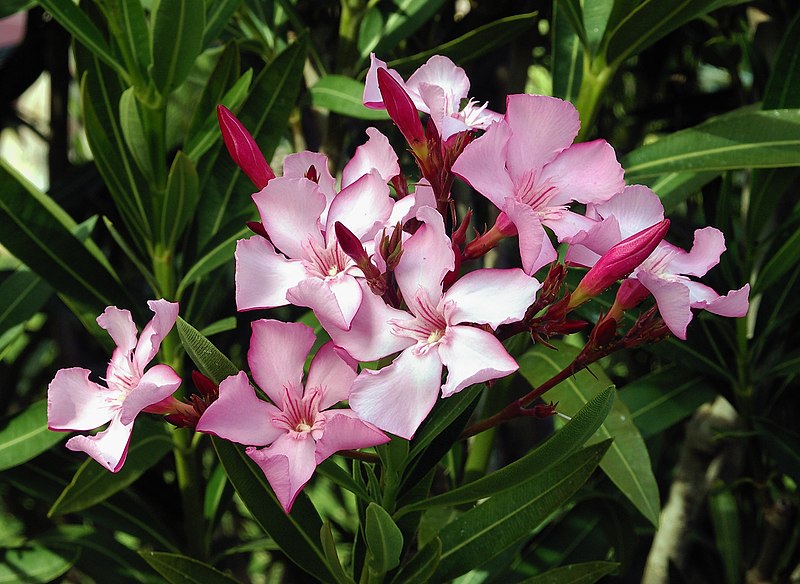
Introduction
The other day, I was looking at an oleander plant growing in the back garden & thinking to myself that, had the rest of the foliage in the house been anywhere near as tasteful as it used to be when my grandmother was alive, I would have protested against the presence of this pathetic little eyesore. They say that oleander can be an aesthetically-pleasing plant with its pretty flowers & pleasant fragrance, but I beg to differ. The flowers are mediocre at best & there is no identifiable scent.
I should know: other than the weed growing in the back garden, an oleander plant was the only foliage in the patch of mud outside our two-room apartment when my Army officer father was stationed in Sukkur (Sindh Province) & we had to live there as well for what seemed like an eternity in a boiling, disease-ridden place in which the water had a green film of oil & chemicals that needed to be skimmed off before drinking.
Nerium oleander, to use its botanical name, is a singularly useless plant & a potentially-fatal poison to boot.
Purported Medical Applications
Not to say that Nerium oleander doesn't have its proponents:
Nerium Biotechnology Inc. (NBI) is a Texas-based biotechnology research company. NBI lead researcher & scientific advisor, Dr. Robert Newman (Ph.D., Professor Emeritus, Professor of Experimental Therapeutics & Founder/Co-Director of the Pharmaceutical Development Center at the University of Texas M.D. Anderson Cancer Center) is a great believer in the therapeutic effects of Nerium oleander in the successful treatment of complaints as diverse as skin rejuvenation & cancer (let the record state that none of the remedies supposedly derived from Nerium oleander have proven to be even remotely effective against any disease so far).
Other parties maintain that Nerium indicum (Indian Oleander) in powder or cream form can be a very effective topical medication for dermatological complaints such as scabies & skin inflammation - but judging by the lack of customers pining for Nerium oleander, it is reasonable to assume that the promised healing is three parts blind optimism & one part reality...at best.
Hazards
Nerium oleander is a veritable toxicology textbook in terms of the number of poisons it contains. The most dangerous are oleandrin, folinerin & digitoxigenin. Each of these toxins can cause a whole range of problems, but a detailed description would take up several pages.
In summary, ingestion causes abdominal pain, vomiting, diarrhea, visual disturbances, rapid pulse & potentially-fatal heart malfunction; skin contact with the sap causes blistering, irritation & soreness. Burning oleander wood produces toxic smoke that can poison food being cooked on it or bystanders in close proximity to it.
Examples of the ill effects of oleander poisoning are scattered throughout history. During the Peninsular Wars, some of Wellington's soldiers are said to have died from eating meat cooked on oleander wood skewers. During the late 19th Century, it was found that soldiers had died from sleeping on oleander branches.
The leaves of the plant are particularly toxic. Animals & birds will die if they drink water into which oleander leaves have fallen.
Conclusion
Oleander must definitely have some purpose & role in the Earth's ecology or else it would never have been created. But whatever that role may be, all prospective farmers, gardeners & horticulturists should be warned of the grave dangers posed to them & all who come in contact with Nerium oleander & its cousins. This is particularly relevant in Khyber Pakhtunkhwa Province since the Provincial Government has recently announced a project to encourage the cultivation of fruit & grains even in areas that don't customarily practise agriculture.
No comments:
Post a Comment